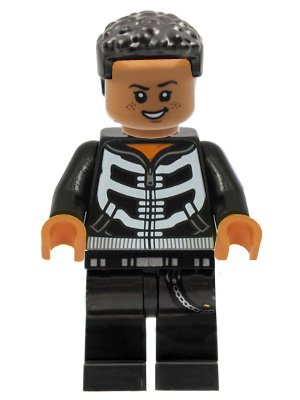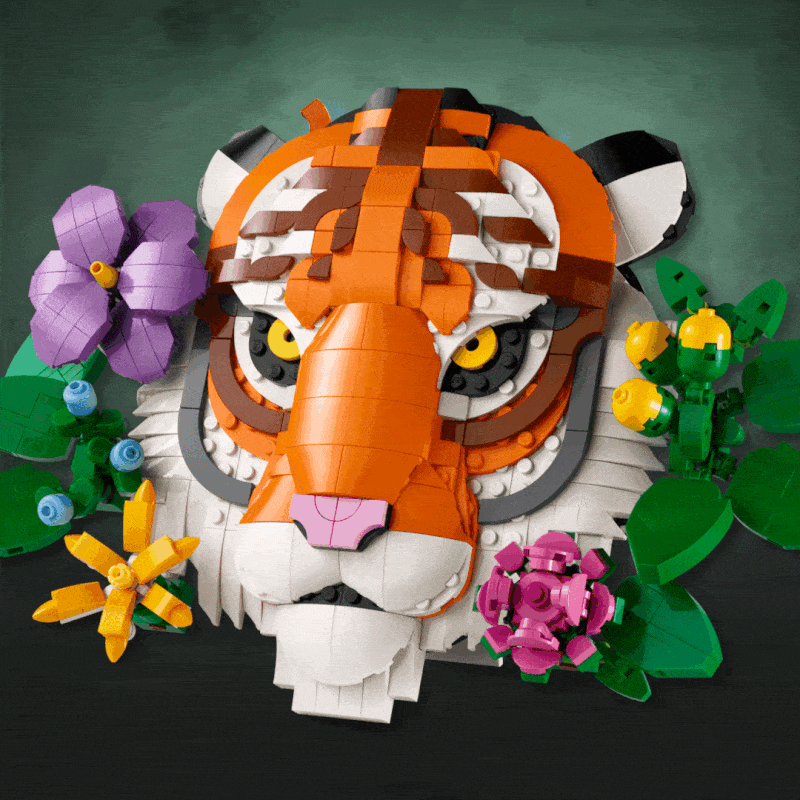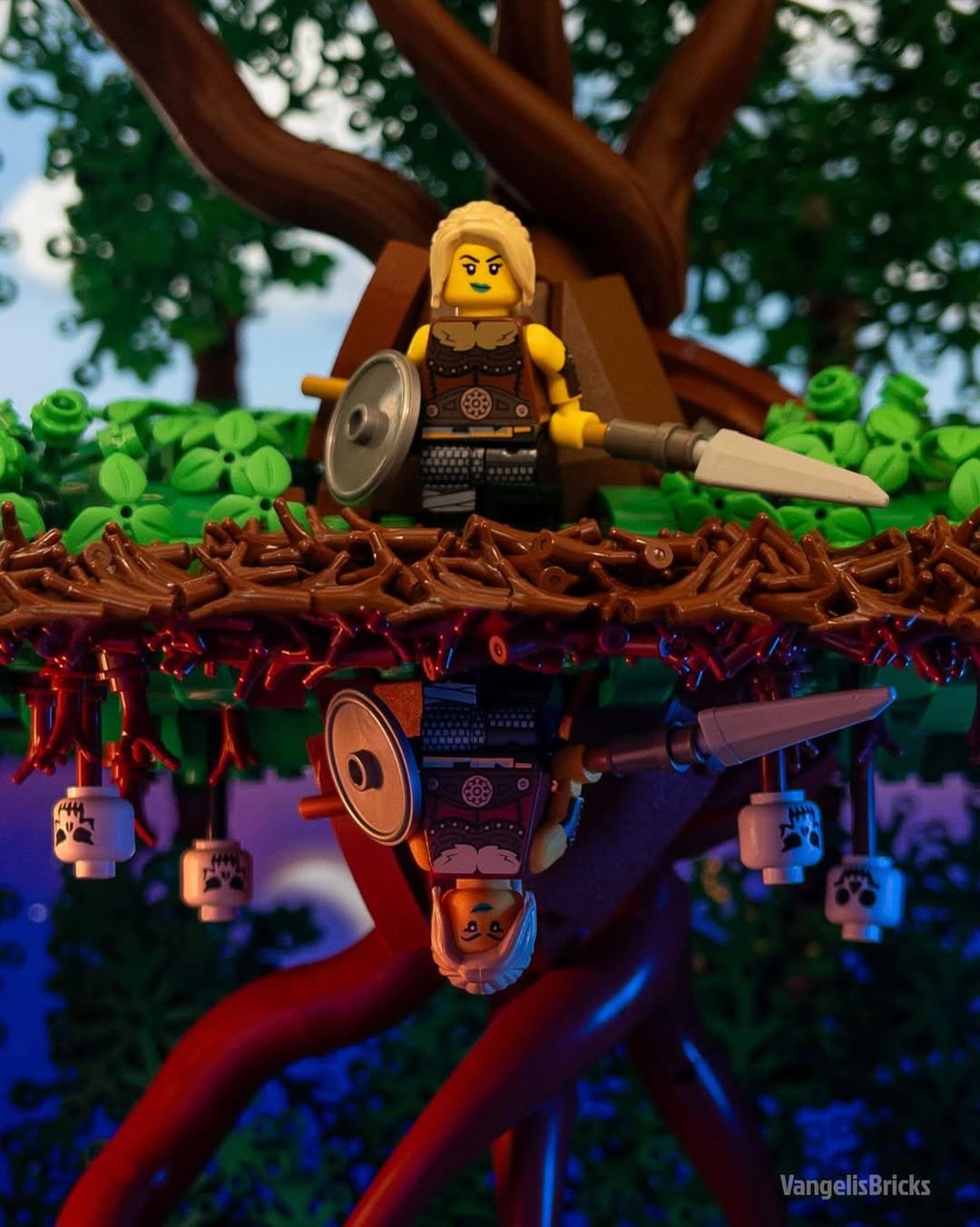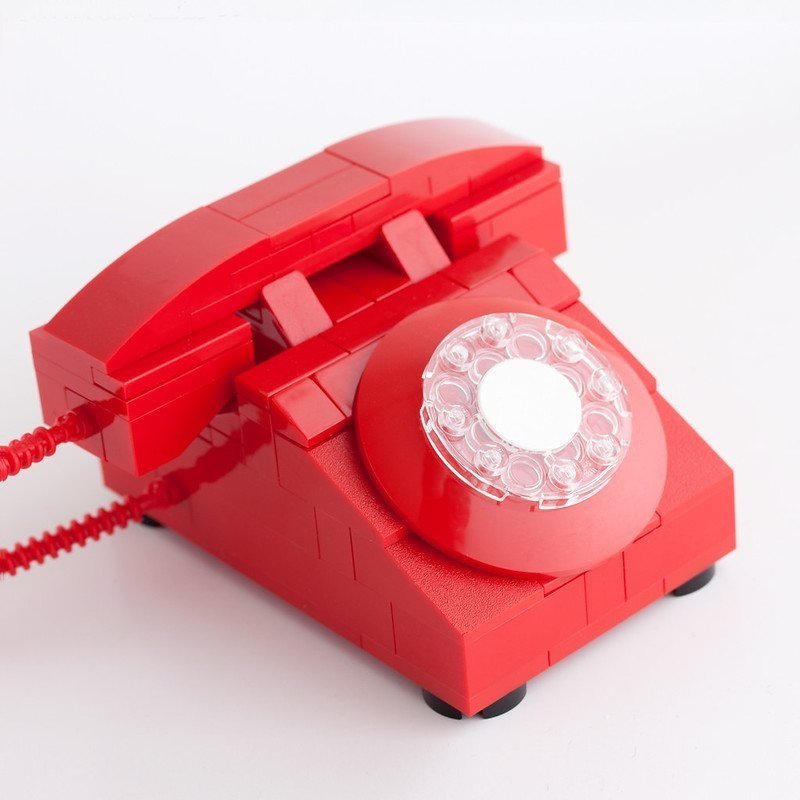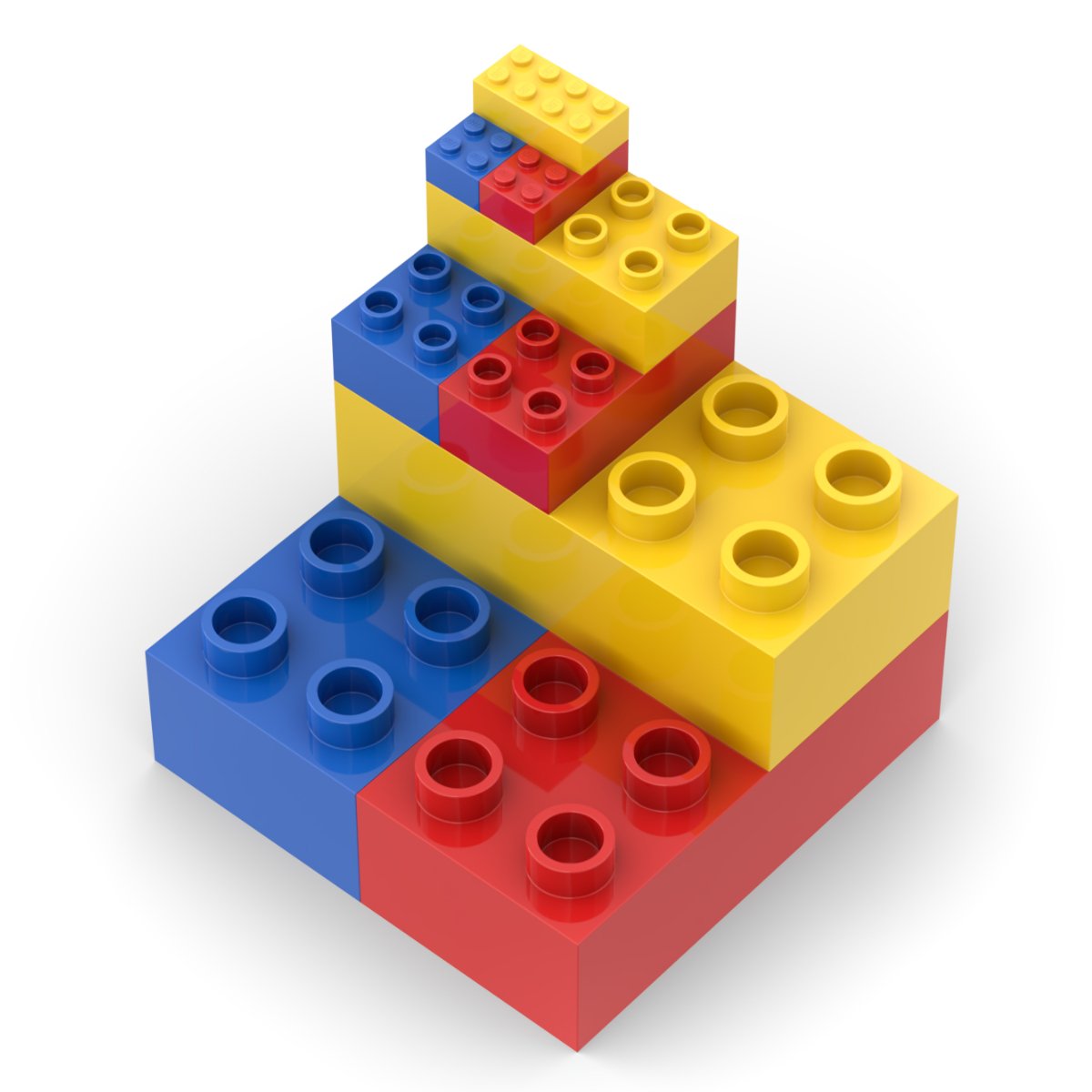Finding Myself in LEGO: The Struggle to Make a Black Sigfig
/Today’s guest article comes from Levi Knighten who shares their experience trying to create a sigfig as a black, queer fan of LEGO.
I was introduced to LEGO through my partner during college. After we moved in together, he took me to one of his favorite places: the LEGO Store. I had never even been to one before and was overwhelmed by the sea of yellow. All of the sets on the walls and minifigure pictures everywhere seemed inviting. Yet, I noticed I was the only black person in the store.
Having gone back many times since, including to different locations and even to our local Bricks and Minifigs, I am often the only black person in the room. In recent years, there has been a bit more diversity in both sets and clientele that I can see. But I never feel quite comfortable when I’m in public at a LEGO store, event, or even my local LUG meetings.
If anyone reading this grew up as a black kid in a predominantly white neighborhood for any length of time, you’ll understand the feeling. You have to “act” as though you don’t feel like you shouldn’t be there, knowing that you’re probably getting stared at for being in the manga or sci-fi section of a bookstore. Then, you catch a glimpse of another person who looks like you, thankfully winding down the innate tension you feel by a single notch. If I wasn’t married to the person I am, I would never go into a LEGO store. Why stress myself out over a bunch of toys?
This story isn’t only about being black, though–there’s a twist. At the beginning of this journey I was a woman, but by the events at the end of the first paragraph, I was out as a nonbinary/transmasculine person. I won’t bore you with the whole story of how I came to know or any of the barriers I encountered to living life the way I want. I will simply leave it at the fact that I don’t look the way I did when I first discovered LEGO. Finding a sigfig is hard enough when you are black, so finding one that represents me as I am, both black and queer, was even more difficult.
Shelling Out for a Sigfig
For the uninitiated, a “sigfig” is a LEGO minifigure that represents or looks like you. Making my own sigfig as a black person was hard enough because skin tones other than yellow and light flesh are hard to come by. My partner had to buy the hands for the torso piece I chose separately. I understand the official stance is that yellow represents everyone, but I wanted my sigfig to look like myself in reality. I use my imagination for everything else I build out of LEGO, but for the thing that represents me, I wanted to actually look like me–representation matters.
Thus began my hunt for minifig parts in the right color. Starting with hands, I needed to buy part 983 in Medium Nougat which starts at 20 cents per hand on BrickLink. Yellow hands start at less than a cent each and currently have over 10 times as many lots available for sale. If someone similar in skin color wanted to make their own sigfig, they could run into an issue when trying to source multiple pieces from one store and finding that the seller doesn’t have any of those specific hands in stock, due to the lack of overall supply of non-yellow hands.
But that is if you are aware of BrickLink, let alone know how to navigate the confusing marketplace. When a LEGO Store employee suggested BrickLink as an alternative to their Build-a-Minifigure bar, what started as hope turned into dread trying to find the right parts–and that is before I saw the prices.
Let’s say I want to change my sigfig a bit to better match who I am now. Thankfully, there are more heads than I initially expected due to the rise of black actors in major film franchises. But most of the actual prints are stern faces (I don’t want an angry black sigfig) or are too specifically representing a certain character (i.e., the various prints for Commissioner Gordon from Batman). Here are the few “happy” faces I found:
If I wanted to portray myself working out or swimming, both things I enjoy doing quite a bit, my sigfig would have to be wearing a shirt, or I’d have to customize and paint it myself. There are no printed human-like torso pieces in medium nougat without a shirt unless you count the torso for E.T. (which… does NOT realistically work for anyone I would suspect).
For the torso and legs, I should be able to just pick ones that I like the print and outfit of and plan to swap the hands out. I would, however, have to pretend like I don’t live in tank tops 80% of the year or have a sleeve of tattoos. There are plenty of bare arms and tank tops/low-cut tops for LEGO torsos, but only in yellow–not the most fun prospect, but you do what you must.
This is about ⅓ of the medium nougat head options, available here for anyone who would like to see the full chart. I went through every Medium Nougat head listed on BrickLink. Note not only the pricing but also the low number of sets these appeared in.
An Expensive Hairdo
When building an accurate minifig, hair is another troublesome spot for me. In the black community, hair is everything. I was once a young black girl, and the look of my perm would convey to others how well off we were and how well my mom could take care of my thick hair, not to mention the chemical burns and constant headaches from maintenance and the pricey but important products you have to buy if you choose to go natural. None of this is even truly touching on the cultural aspects, the shared memories, and the lack of an accepting society (to put it mildly) regarding our hair.
So when I pulled up BrickLink again and saw 483 individual hair pieces listed (this count is not including color variations for the molds, just unique elements), I wouldn’t say I had high hopes necessarily but maybe a faint glimmer. My current hairstyles are very common; if you see me out and about, I’m usually rocking cornrows, short twists, or the inevitable twist out. This is a long preamble to explain that I’m not exactly pushing any boundaries when looking for hair that looks like mine in a black colorway.
I found 17 natural hairstyles, nine of which are labeled as “female” by BrickLink. The questionable gendering on BrickLink is honestly a whole other topic, but I will note that it was definitely strange considering the same pieces aren’t gendered officially by LEGO. I spent over an hour looking through and charting these hairpieces, trying to ignore the growing pit in my stomach.
The unease only grew larger as I noticed the prices and the number of lots for sale. The idea of having a proper sigfig slowly waned into the background. I would simply have to settle for “close enough”. What am I supposed to feel besides frustration when half of the pieces cost over a dollar? Or when a few better ones cost over three dollars without even factoring in shipping and minimum store buys? Apparently, LEGO haircare for black sigfigs is just as expensive as the real thing.
There has always been a lack of true representation of the spectrum of black hair in the media but the first two hairpieces from my list of options came out in 2015, with 11 of those coming out in 2020 or later. Many of these hairpieces were available in fewer than 10 sets or were only part of the Friends line, so there’s a dearth of available pieces. When I was looking, the dreads hairpiece (part 2123) only had two sellers in the entire world with a total of four pieces available. The piece I would actually use for myself (part 79688) is luckily less than a dollar but shipping from the first USA seller brings it up to $6.
While making this particular chart, I was worried that it would seem on par with the non-black hairstyles. Then I remembered that I was specifically looking for the colors in black only to properly represent a more natural range. Here is the black hairstyles chart for anyone who needs it.
Not Everyone Is Yellow
For those at home still following along, my total cost for making my own sigfig that doesn’t really look much like me would be more than $15. This cost for a single minifig is increased by having to source parts from multiple BrickLink stores, incurring even more shipping costs.
For comparison, I built a sigfig for my partner (who is caucasian) for his birthday several years ago along with two other minifigs he could use as options from the Build-a-Minifig bar in about a half an hour at the LEGO Store. The price was $10 for all three minifigs that looked just like him. He has never had a problem with his minifigure having the classic yellow color. For my other white friends I asked, they had never had to think about yellow not representing them. However, my non-white friends agreed with me that they would rather try and find their skin tone because the standard yellow doesn’t feel right to them.
I know LEGO has said they are working on the issue, but the speed of the rollout has been dismal to say the least. I’ve seen a report of varied skin tones being available at a LEGO Store once but that sadly appears to have only been a pilot program or a one-off occurrence–enough to get my hopes up but crushing to realize what could be possible but isn’t being implemented for people of color.
(Minifig station photos via BrickCentral.)
Other set releases like 21337 Table Football seem like an attempt to make a more diverse cast of minifigures available. Still, that set is expensive and the minifigure elements are inconsistently (but thankfully) available on LEGO’s online Pick a Brick service. Some progress has been made with the current Friends reboot, but that all leads me to wonder if the company is doing enough and living up to their own promises about diversity when the simple answer is right in front of them: adding various flesh tones besides yellow to the Build-a-Minifigure bar at LEGO Stores.
For example, I recently went to a local LEGO store to search for minifig parts and found one single hairstyle that could be used as natural hair for a black person. To be a bit more specific, not only did I see just one hairstyle, I only saw the part once while I was looking through the bins–it must have been a holdout from a former batch of minifig parts. I’m not sure if the pieces were simply less available or if the bins had already been picked through by the time I made it to the store.
IMage via The Brick Fan.
Either way, I would argue that there should be more options available at any given time. Even in my own personal collection, I only have two appropriately textured hair pieces, from more expensive licensed sets I purchased specifically for the chance to make a minifig that at least looks like someone from my community, if not like me exactly.
I’m well aware I’m not the first person to feel this way, nor will I be the last. LEGO has traditionally been a Europe- and America-centric company, but that isn’t an excuse anymore with their expansion to other markets around the globe. I was only able to cobble together this minifig for myself because I’m an adult with free time and a little extra money. But if I were a parent or guardian with less spending money due to the rising costs of living let alone providing for a kid, I don’t think I could justify spending over $15 for a single minifig without it being a special occasion. (That is also assuming that the guardian in question is aware of BrickLink, makes an account, figures out how to search by part, then can navigate the obtuse ordering process).
Everything’s Not Awesome
As a reminder, I’m not only black but queer. If finding an appropriate colored sigfig was difficult enough, imagine trying to navigate the increasingly hostile environment against the LGBTQ+ community in addition to all of that.
For example, I love LEGO Dots and was saddened to hear the product line was ending. I had planned to get the final wave as a celebration of all the bright colors and fun printed tiles for my microscale builds… until it was revealed the final wave would be themed around Harry Potter–a series that I cannot personally support because of the author’s vitriolic beliefs against my very existence. Even though LEGO has disavowed those views, I’m sure the licensing fees that Warner Brothers earns from all the related sets and merchandising makes its way back to the source. I will not take part in that, and it breaks my heart to see my beloved Dots go out not with a bang but a whimper.
In case someone has made it this far without truly understanding the issue, black and queer people (and in my case, both) just want to live in peace and enjoy the LEGO hobby like anyone else. We want to enjoy nights out with friends, read books from our local libraries, and maybe even build some LEGO sets while relaxing. We want to be able to create a minifigure to celebrate birthdays, weddings or even just to have a sigfig that looks like us. It’s not exactly fun to have to be hyper-aware of the lack of representation around us every time we go into a LEGO store or have to withstand a barrage of negative and queerphobic sentiment every time we go online.
To me, LEGO is all about creativity and expression–two things they seem to be willfully obstructing when it comes to diversity in contrast to their corporate promises. Yes, there has been some progress with sets like 76215 Black Panther, 10291 Queer Eye, and 40516 Everyone is Awesome. Yes, I know that it takes time for a large company to make changes. But if a LEGO Ideas set can be approved and make it to market in a year, there isn’t a valid excuse for why LEGO hasn’t made diverse minifigures more available outside of sets other than the obvious and dismaying reality that they choose not to.
Representation, Visibility and Accessibility Matter
As someone who enjoys building and expressing myself creatively, I’ll keep doing what I do: going to LEGO shows, LUG meetings, and all that. I hope my presence as a black and openly queer person makes a few of the newer members feel more comfortable. But I don’t know how much longer I can wait for LEGO to catch up–for them to realize that representation, visibility and accessibility matter and take significant action.
Personally, I hold out hope that things will change. That one day a new LEGO set targeted at either the black or queer community isn’t seen as “political” or cause backlash online but instead brings joy and inclusion. That any kid of any color can build a minifigure of themselves at a LEGO Store for the same price as anyone else. That the entire hobby becomes a bit more… colorful.
When I attended a LEGO convention last year displaying some of my creations, I had a few black families come over to talk to me, and I knew why. In a sea of yellow, it must have been a relief to see a familiar color.
Best of BrickNerd - Article originally published February 27, 2023.
What do you think LEGO could do to be more inclusive of diversity? Leave your thoughts in the comments below.
Do you want to help BrickNerd continue publishing articles like this one? Become a top patron like Marc & Liz Puleo, Paige Mueller, Rob Klingberg from Brickstuff, John & Joshua Hanlon from Beyond the Brick, Megan Lum, Andy Price, Lukas Kurth from StoneWars, Wayne Tyler, LeAnna Taylor, Monica Innis, Dan Church, Roxanne Baxter, and Steven Laughlin to show your support, get early access, exclusive swag and more.















